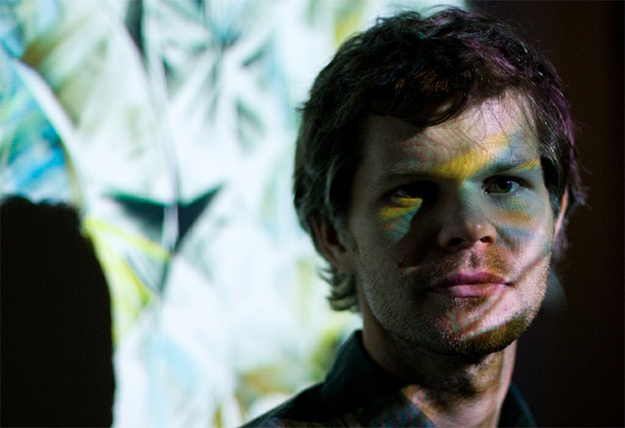Over the past 10 years, Processing has become the programming language of choice for anyone making technology art, whether it's at NYU's ITP program or the more adventurous corners of the New York Times. We talked with Casey Reas — half of the Processing team and a reknowned computer artist in his own right — about his favorite UI tricks and the upcoming release of Processing 2.0.
How much work do you and Ben Fry do to maintain Processing?
We're working on it more or less every day. Frequently we go full-time on it for a stage too. The good news is, the community is largely running itself these days. After years of putting a lot of energy and effort into that, we have a small core group of people who are doing a great job moderating the forum and their work's very essential. What Ben and I are doing continually still is working with key members of the community for developing out different parts of the software as well as doing the core development. Ben has always been the core software architect for the project, so all the code passes through him, even when it's contributed code.
View this video on YouTube
My Little Piece of Privacy by Niklas Roy
What's the most exciting thing you've seen Processing used for recently?
Some of the things that are more interesting to me are aspects that involve the physical environment as well, so using sensing and using motors to both affect what software is doing or using software to drive actuation or movement in the world. The space in between the physical world and software is a really exciting place to explore. And that's become possible through things like Arduino and the ease of use in working with electronics, as well as easier software interfaces for speaking back and forth.
What kind of projects are working in that space?
Well, one thing I saw in the Processing exhibition...it's not a big idea but I think it points to the potential. Someone has their studio in a very public window, so in order to give themselves some privacy, they had this small curtain that they would actually move left and right controlled by a motor across the window. So if somebody walked across the window, the curtain would literally follow them across the window to give [the artist] constant privacy. It's a more playful way of thinking about it than just putting up a big curtain.
How long has a project like that been possible?
In labs people have been experimenting with computer vision for a long time, like being able to track a body. We can go back almost 20 years and find examples of that at the MIT video lab, designing interfaces that track someone's arm or hand. It's really only with the release of the Sony iToy where that became something that was more public. And now with the Kinect, it's become massively public. So that's an example of the technology changing. And then the tools around them have changed, so that instead of needing a Computer Science degree to do a prototype that has face detection, now with Processing and with other tools you can use an existing codebase to do that in a few weeks.
Why do you think we've seen these tools pop up in the last decade, when personal computers have been around for much longer?
There's a number of reasons. One is that people who grew up using personal computers, people who grew up in the 1970s and the 1980s, are now of the age where they are acting and practicing artists and designers and they have this desire to expore these areas of interest and make these tools. And then you also have the internet, which i think has been extremely important for shipping around code and really allowing these projects to grow and people to communicate. And then we have things like Source Forge and Google Code and GitHub as ways that allow people to really easily collaborate, share code and work across distances. So I think these three things together have fed into this current moment of experimentation.

What's in store for processing 2.0?
It will be much faster at working with HD video. There's also these 3D graphics features that were created by Andres Colubri and are now being added into the core of Processing. The other thing for Processing 2.0 is this idea of modes, so within the same environment you can work with different programming languages and export to different platforms like Javascript or Android.
Do you have any plans for iOS development tools?
We're not going to be doing that personally, but we really encourage other people to explore it. The nature of Processing is very open source. It's all about access. And the way that iOS is very locked down and access is limited doesn't encourage us to put work into developing for it.
When is the 2.0 release going to be ready?
[Laughs] We've learned not to talk about that.

